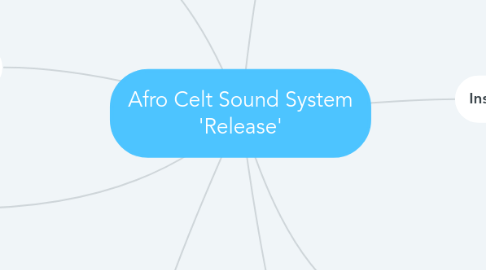
1. Structure
1.1. Most phrases are in multiples of 4 bars
1.1.1. Introduction - 20 bars and 48 seconds Verse 1 - 24 bars Break - 8 bars Verse 2 - 24 bars Solos 1 and 2 - 16 bars Break - 2 bars Solo 3 - 8 bars Verse 3 - 24 bars Outro - 36 bars
2. Music Technology
2.1. Multi-track recording, mixing techniques are used to balance the different loops.
2.2. A filter is used on the drone at the beginning
3. Melody
3.1. There are two main vocalists, a hurdy-gurdy solo, an Uilleann pipe solo and a low whistle solo.
3.1.1. A common motif is used as the melodic content in most of the vocal parts. The instrumentation solos are based on folk melodies.The low whistle and uilleann pipe solos do not use the submediant note of the scale (Ab or A). The hurdy-gurdy solo contains A and Abs.
4. Rhythm, Metre & Tempo
4.1. The song begins with no regular beat. A steady beat. is provided when the bodhrán enters.
4.1.1. The song begins with no regular pulse. When the shaker loop enters at around 26 seconds into the track, the sense of metre starts. The talking drum solo that is used more for effect than for creating a pulse because it does not have a steady beat. At 48 seconds, the bódhran enters and provides a steady beat (100 beats per minute).
5. Context
5.1. The Afro Celt Sound System was a collaborative music collective. Release was a
5.1.1. The Afro Celt Sound System was a collaborative music collective that began in 1955 as an experiment to see what would happen if musicians from different cultures improvised together over some techno drum grooves. The result was successful, and the group took it to a recording studio where a recording week is held each week to allow people from around the world to create new music. The Afro Celt Sound System is the name of a popular music group, formed in the early 1990s by Grammy-Award-nominated Simon Emmerson. While in Senegal, he noticed that there were close similarities between a traditional folk song from Senegal and an Irish Air. As they were about to record ‘Release’, one of their keyboard players died and almost stopped the project. Sinéad O’Connor contributed some lyrics, and inspired the group to continue. She is the female vocalist.
6. Tonality & Harmony
6.1. The piece is in the key of C minor, it uses the Aeolian mode.
7. Instrumentation & Sonority
7.1. Music technology, folk instruments from Ireland and Africa, traditional western insturments.
7.1.1. Vocals, Uilleann Pipes, Low Whistle, Bodhrán, Shaker, Drums, Synth, Tambourines, Talking Drums, Kora, Bass, Breath Samples, Fiddle, Accordion, Hurdy-Gurdy, Electric Piano
8. Texture
8.1. The song has a layered texture that uses music technology to blend the parts together.
8.1.1. 1. Synth pad drone with a filter sweep effect. 2. More synth parts subtly added, hard to discern because of the addition of the talking drum. 3. A shaker rhythm is added and an African vocal in the ‘griot’ storytelling style enters 4. The talking drum stops, the bodrhán enters along with some percussion loops 5. The female voice with a wordless melody replaces the male African voice At the beginning of each 8 bar phrase, more parts are added. In bars 7 and 8 of the last eight-bar phrase, several parts drop out.
